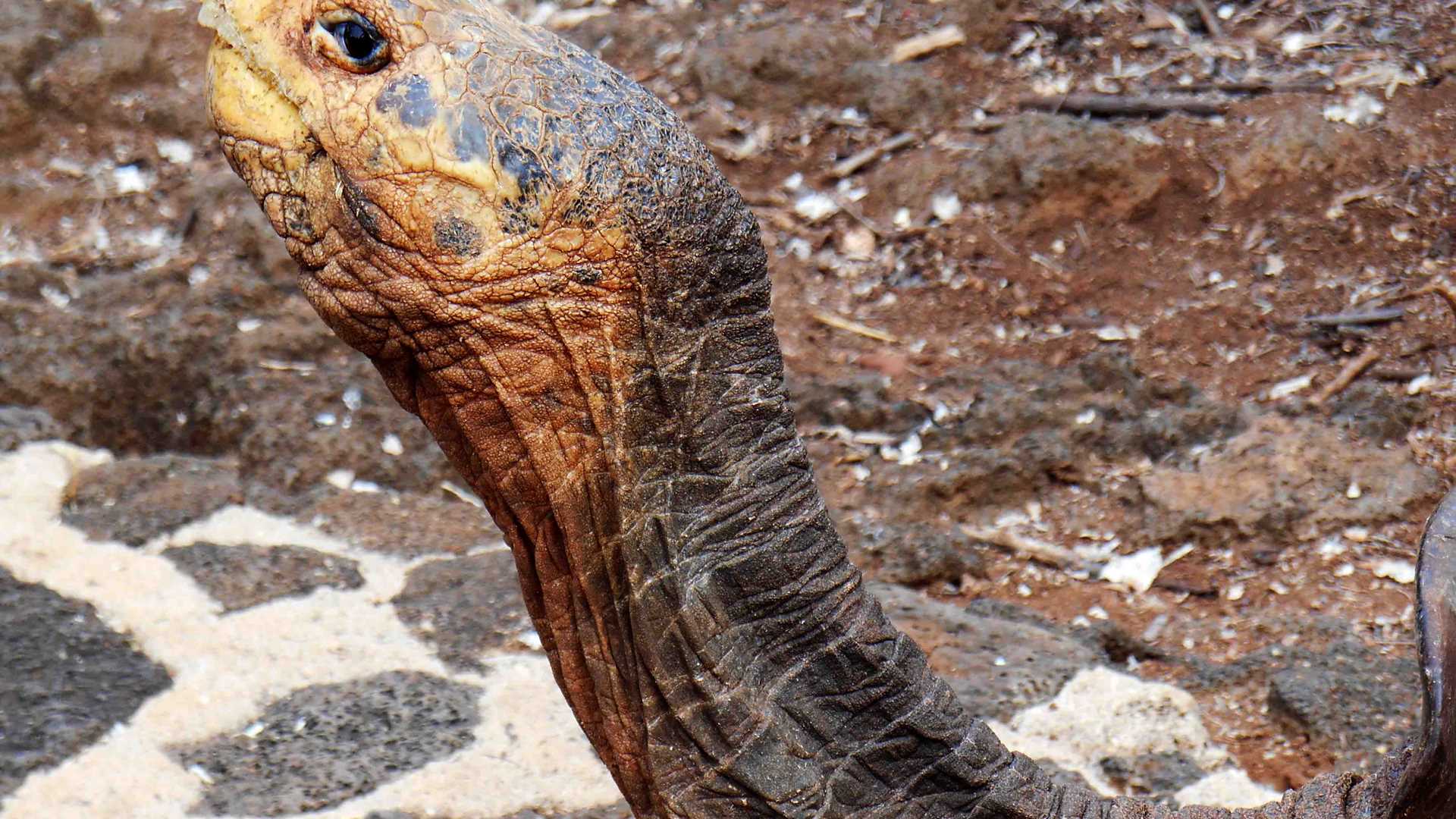Today our destination was the largest human settlement in the Galapagos. After exploring the natural protected area during these last days, Santa Cruz provided us a different experience of a mixed cultural and natural experience. We first visited the Charles Darwin Research Station (CDRS). Visiting this place reminds me of the time when I worked as part of the Environmental Education Program and all the efforts that are constantly taken to use science as an applied tool for conservation of the iconic biodiversity of the Galapagos. We had a quick stop at the Native Garden area, a project devoted to inspire locals to use native vegetation in their gardens in order to avoid the introduction of alien species from the mainland. Considering that for most of our guests the process of maintaining a garden is familiar, this area raised a lot of interest. We also learned about biological control strategies that have been applied to eliminate introduced species.
After this introductory walk, we continued to the giant tortoises’ corrals. This area is not to be appreciated as a zoo, but as a breeding center where the main purpose is to protect young tortoises until they reach a safe size to be released on islands where we still face the threats of introduced species. The remarkable fact of visiting this area is to acknowledge the long term success that has been achieved through this conservation program. It is important to take into account that when the Galapagos National Park and the CDRS were founded in 1959 there were approximately only 2000 tortoises. Currently we can proudly state that there are more than 20,000 giant tortoises and growing. If we consider that once there was a population of 200,000 individuals which were drastically reduced by exploitation from XII to early XX century by pirates, whalers and private collectors, we can understand that the task of recovering the population of these iconic animals will never be absolutely complete. Our guests had a great chance to see the different species from diverse islands and to learn the different stories of particular populations, including super Diego. Diego is a good illustration of how a whole population of tortoises can recover even from a small remnant group of surviving individuals.
After this visit, we had some spare time to visit the town of Puerto Ayora. This charming town offers various interesting sites such as the fish market, a handy crafts bazaar, and some restaurants which are built from the wood of the US military base existing in the Galapagos during the World War II. We finished the morning with a visit to a local farm and a school, which gave us the chance to learn from the local farmers and educators.
After a fabulous lunch in the highlands we visited a farm which is also located in the highlands of Santa Cruz. The farm is positioned within the natural migratory route of the Galapagos tortoises. Here, each one of our guests had time on their own to explore and experience personal interaction with one of the many tortoises grazing in this location. During this time we enjoyed the enchanted and hypnotizing effect of these antediluvian creatures. No better way of finishing this journey with a silent moment in the company of such unique animals. Later on we returned to town with an optional choice to stay in town for some shopping, having a drink, and seeing the urban life of the Galapagos society.
As I am writing this report a live music group is playing in the lounge of the National Geographic Islander. I better go, as it seems that soon there will be a good chance to dance to this contagious music.







